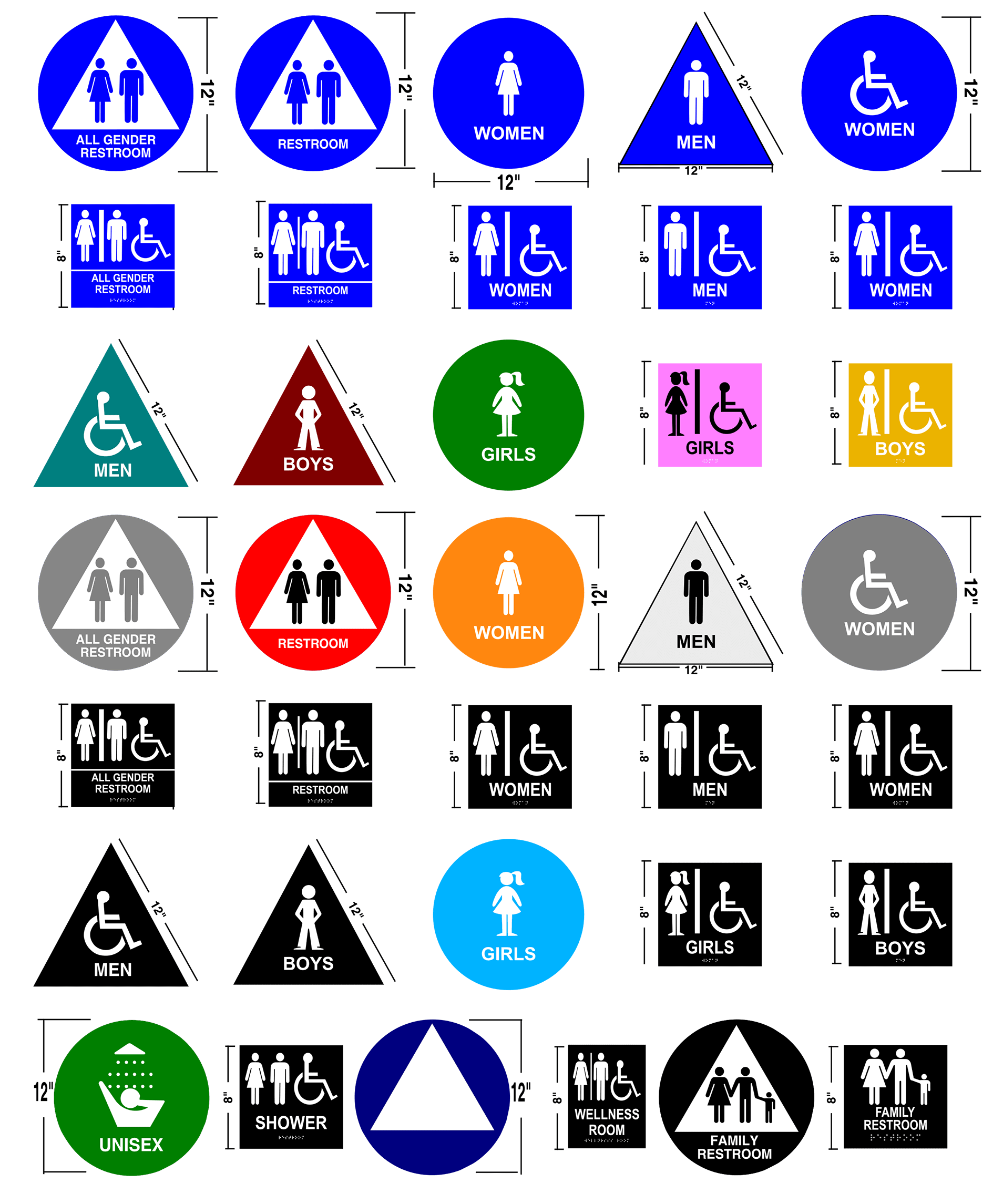ADA Signs: Important Tools for Inclusive Environments
Exploring the Secret Functions of ADA Signs for Boosted Access
In the realm of availability, ADA signs serve as silent yet effective allies, guaranteeing that areas are navigable and comprehensive for people with specials needs. By incorporating Braille and tactile components, these signs break obstacles for the visually damaged, while high-contrast color plans and readable font styles provide to varied aesthetic demands.
Importance of ADA Conformity
Making sure conformity with the Americans with Disabilities Act (ADA) is critical for fostering inclusivity and equal accessibility in public spaces and offices. The ADA, established in 1990, mandates that all public facilities, companies, and transportation services fit people with specials needs, guaranteeing they take pleasure in the very same rights and chances as others. Conformity with ADA requirements not only satisfies legal responsibilities yet additionally improves a company's track record by showing its commitment to variety and inclusivity.
One of the essential aspects of ADA conformity is the implementation of easily accessible signs. ADA indications are designed to make certain that individuals with specials needs can quickly navigate via areas and structures.
In addition, adhering to ADA regulations can minimize the danger of potential fines and legal effects. Organizations that stop working to adhere to ADA standards may deal with charges or lawsuits, which can be both monetarily difficult and harmful to their public picture. Thus, ADA compliance is essential to fostering an equitable atmosphere for every person.
Braille and Tactile Components
The consolidation of Braille and responsive components right into ADA signage symbolizes the concepts of availability and inclusivity. These features are essential for people who are blind or visually damaged, allowing them to navigate public areas with better independence and self-confidence. Braille, a responsive writing system, is necessary in providing composed details in a format that can be quickly regarded through touch. It is normally positioned underneath the corresponding text on signage to make sure that people can access the info without aesthetic aid.
Tactile aspects prolong beyond Braille and include raised symbols and characters. These elements are made to be noticeable by touch, allowing people to recognize room numbers, washrooms, departures, and other crucial areas. The ADA establishes details standards relating to the size, spacing, and placement of these tactile components to optimize readability and ensure uniformity across different settings.

High-Contrast Color Design
High-contrast color design play a critical duty in improving the visibility and readability of ADA signs for people with visual disabilities. These systems are crucial as they take full advantage of the difference in light reflectance in between text and history, guaranteeing that indications are easily noticeable, also from a distance. The Americans with Disabilities Act (ADA) mandates the usage of certain color contrasts to suit those with limited vision, making it an essential facet of compliance.
The efficacy of high-contrast colors hinges on their capacity to stick out in numerous lighting problems, including dimly lit settings and locations with glare. Typically, dark message on a light background or light text on a dark history is used to achieve ideal contrast. For example, black message on a white or yellow background supplies a stark visual distinction that assists in quick acknowledgment and understanding.

Legible Fonts and Text Dimension
When thinking about the style of ADA signs, the selection of understandable typefaces and proper text size can not be overstated. The Americans with Disabilities Act (ADA) mandates that font styles should be sans-serif and not italic, oblique, manuscript, very ornamental, or of uncommon kind.
According to ADA guidelines, the minimal message height must be 5/8 inch, and it ought to enhance proportionally with seeing range. Consistency in message size adds to a natural aesthetic experience, aiding people in browsing atmospheres successfully.
Additionally, spacing between lines and letters is integral to clarity. Adequate spacing stops personalities from appearing crowded, boosting readability. By adhering to these requirements, developers can substantially boost accessibility, making certain that signs serves its intended purpose for all people, despite their aesthetic capacities.
Efficient Positioning Techniques
Strategic placement of ADA signage is important for taking full advantage of access and a knockout post making certain conformity with legal requirements. ADA guidelines stipulate that signs need to be installed at a height between 48 to 60 inches from the ground to ensure they are within the line of sight for both standing and seated individuals.
In addition, indications have to be placed surrounding to the latch side of doors to allow simple identification prior to access. Uniformity in sign positioning throughout a facility improves predictability, lowering confusion and boosting overall customer experience.
Final Thought
ADA indications play a crucial duty in advertising availability by incorporating features that resolve the requirements of individuals with disabilities. These elements jointly cultivate a comprehensive setting, highlighting the significance of ADA compliance in ensuring equal access for all.
In the realm of access, ADA indicators serve as silent yet effective allies, making certain that spaces are accessible and comprehensive for people with disabilities. The ADA, enacted in 1990, mandates that all public facilities, employers, and transport solutions suit people with handicaps, guaranteeing they take pleasure in the exact same rights that site and possibilities as others. ADA Signs. ADA indications are created to make sure that individuals with handicaps can quickly navigate with buildings and spaces. ADA standards state that indicators must be mounted at a height in between 48 to 60 inches from the ground to ensure they are within the line of view for both standing and seated people.ADA indicators play a crucial function in promoting ease of access by incorporating functions that resolve the requirements of individuals with specials needs